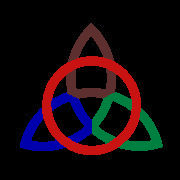
| Geography |


|
Page Bar
|
|
|
Pg.1
|
|
|
Pg.2
|
|
|
Pg.3
|
|
The main field of work in Triquatra comes from the farming and fishing industry. Followed closely by both the Mining and the Labouring industries. The current unemployment rate stands at 4.5 per cent, which has rose .3 per cent since 1995.
Population and Employment:
Within the context of Europe the resident population of Triquatra is considered to be very small, with a slow decrease rate in the working population (1990-1994) of -1% per annum and a unemployment rate of 6.3% (in 2001). The estimated population in 2001 was 310 500 with the following age structure:
The distribution of the active population in 2001 was:
The distribution of the working population (about 90,009) in 2001 was:
Wealth Classes
Triquatra like most other countries can be broken down into three wealth classes, the High class, the Middle class and the Low class. The majority of people on the island are apart of the Middle class, who live their lives fairly well with most owning houses and having steady jobs. For the very few, in fact 15.8 per cent of the population, life on the island is extremely well, this of course is the High class. These people usually own large houses and own parts of the import export industry. The Low class, which comprises of 21.1 per cent of the population, are the class of people who work for very low wages or are unemployed and in drastic situations homeless.

